Molokhia is one of my top 3 favourite foods of all time - it's spicy, garlicky, coriandery and lemony all at the same time.
It's one of those advanced dishes that your teta usually makes, but it's never too early to start learning.
We have to bring back bags of them in our suitcases from Lebanon, which takes up all our luggage space and makes everything smell but is totally worth it.
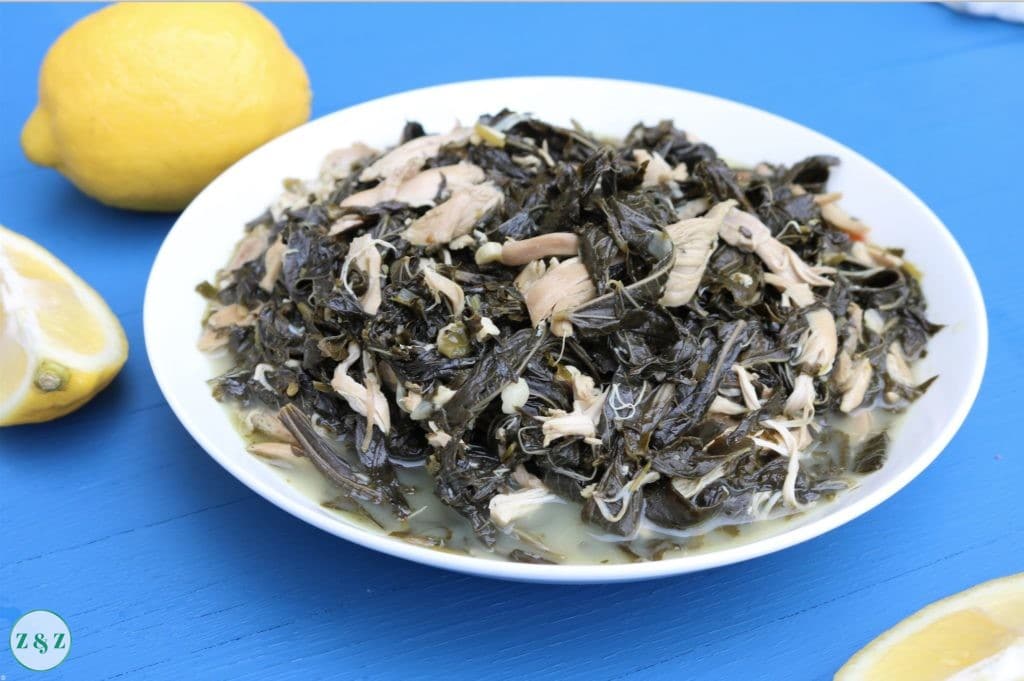
What is Molokhia?
Molokhia is known by several names depending on different parts of the world, including Jew's Marrow or Jute leaves.
In the Middle East they are known as 'Molokhia' and literally translates to 'of the kings' referring to their favoured foods.
The leaves are more robust in texture than spinach and taste way better than kale!
Molokhia has a distinct flavour of it's own and the nearest flavour I can liken them too is okra, which is also gelatinous in texture, but even then it's not the same.
Molokhia travelled through to the Levant area from Africa and is now a standard dish in many Lebanese homes.
The actual Molokhia leaves are usually purchased dried in big bags and you will have to sort through them to take out any odd bits or flowering tips.
Kilos of Molokhia leaves are sold in Lebanese markets depending on how well they have been sorted.
A roughly cleaned bag will set you back 25,000 Lebanese Lira (£13) but you will still have to sort through it again just to make sure.
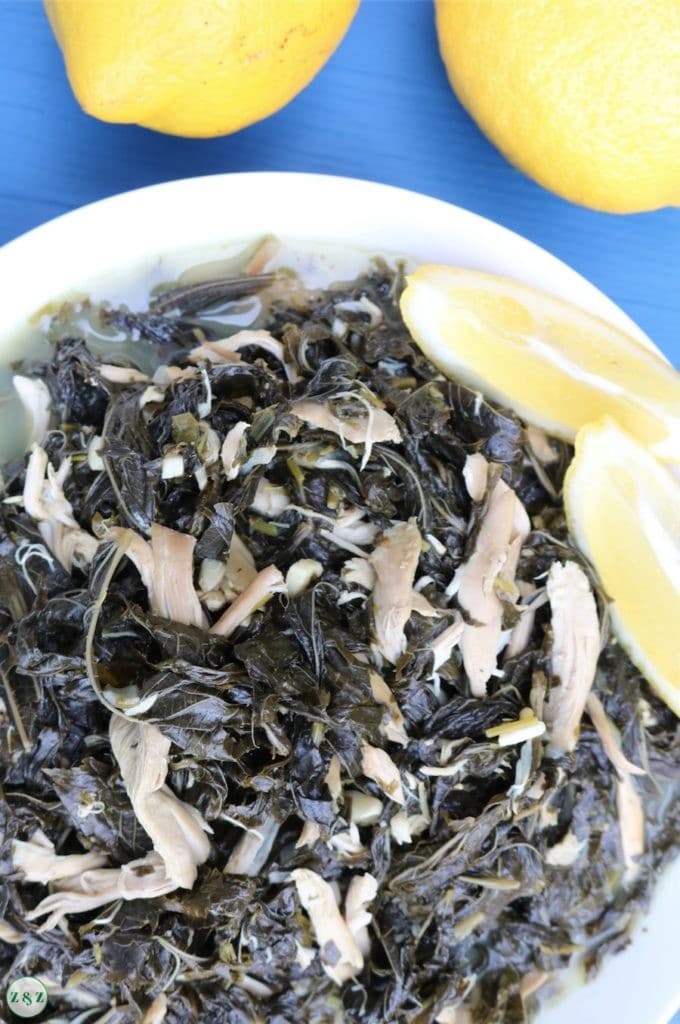
In some countries you can buy frozen molokhia online or source them from Middle Eastern stores.
Most people can't tell the difference between the frozen or fresh variety but I prefer the fresh leaves. Of course not everyone can source these, so using frozen leaves is the next best thing.
After you clean your Molokhia leaves, you will need to be blanch them in hot water.
Then, you will need to compress a ball of the leaves in your hands and give it a thoroughly good squeeze.
My mum does this three times to get most of the stickiness out of the leaves. Once you prepare the leaves it's pretty much a straight forward stew.
The chicken broth
You can prepare the chicken broth or stock (what's the difference really?) from my recipe here. This dish requires more chicken meat than usual so you can add it to the final dish but otherwise it's the same process.
I flash fry the chicken in a pan over high heat then add it to the stock pot with lots of 'mutayibat' or flavour enhancing spices and vegetables.
If you don't fry it off first for a few minutes you will have to stand around the stock pot and remove the scum so it's actually more work in the end.
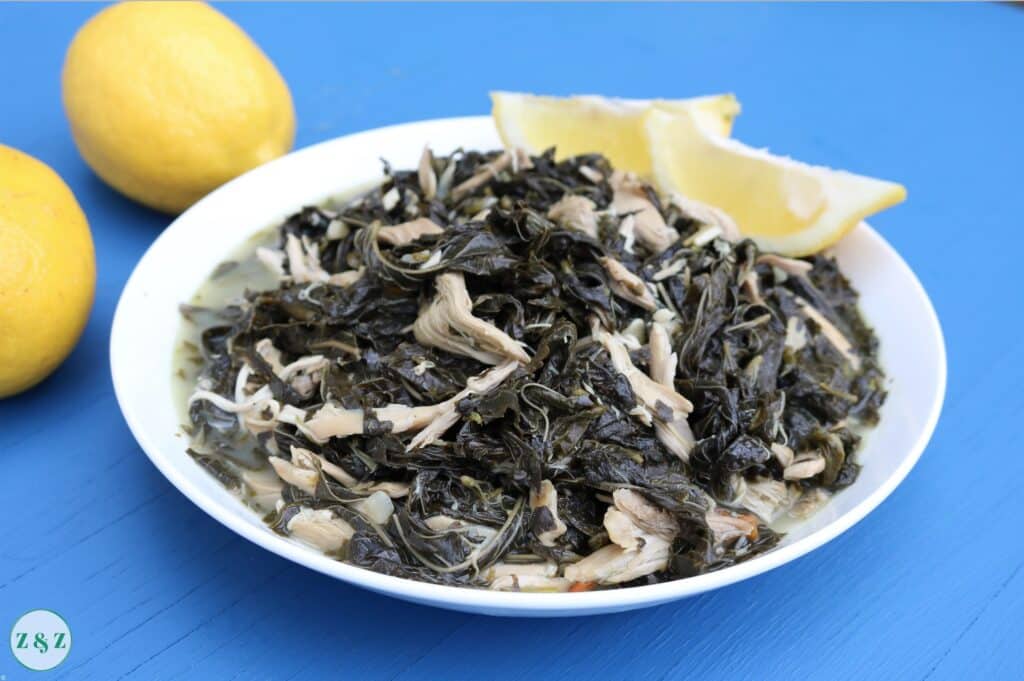
Serving suggestions
This dish is usually eaten with rice although I have seen people in lebanon eat it with flatbreads too. You can find my Lebanese rice with vermicelli recipe here or my perfect plain rice recipe here.
I always have extra lemon slices and salt at the table ready to squeeze on and a final sprinkle of salt. I also love to add lots of the molokhia juices on the rice.
The Egyptian version of molokhia is more like a soup. It is also cooked with a chicken or meat broth and the overall texture is much finer as it is sometimes blitzed to make it smoother.
The Syrians and Palestinians make their own versions too, which are not too dissimilar to the Lebanese one, but this is how we make it in Lebanon.
FAQ
You can also make it with meat although the chicken version is more popular. You would need to make a meat broth and clean the meat off the bone to add to the stew at the end. Overall the process is the same as the chicken one so you can still use this recipe as a guide.
📖 Recipe
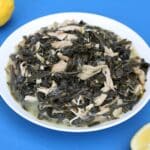
Lebanese Molokhia
Molokhia leaves cooked in a garlicky spicy chicken broth with cilantro
Ingredients
For the chicken broth
- 1 chicken quartered or 6 chicken thighs
- 2 litres of water
- 2 bay leaves
- 1 cinnamon stick
- 6 peppercorns
- 1 cracked nutmeg
- 5 cloves
- 3 cardamom pods
For the Stew
- 400 g whole dried molokhia leaves
- 100 g of cilantro (fresh coriander) or a large bunch
- 1 tablespoon of butter
- vegetable oil
- 2 large onions
- 2 bulbs of garlic
- 2 green chilli
- 1 tablespoon ground coriander
- 4 lemons
- salt and pepper to taste
Instructions
To make the chicken broth
-
Make the chicken broth in advance by flash frying the chicken in a drizzle of regular olive oil on high heat for around 5 minutes until golden.
-
Transfer the chicken to a large stock pot and add the bay leaves, cinnamon stick, peppercorns, nutmeg, cloves, cardamom pods, 1 tablespoon of salt and one whole peeled onion. Bring to the boil and simmer on low heat for one hour.
-
Once done remove the chicken flesh off the bone and set aside. Strain the liquid with a fine sieve to achieve a clear broth.
To prepare the Molokhia leaves
-
Prepare the molokhia leaves by sorting through them removing any flowering heads or anything irregular. Blanche in hot water with a roughly chopped lemon for a few minutes and drain.
-
Once the leaves have cooled slightly, take batches in your hand, twist and squeeze out the slimy residue. Repeat 3 times until you have squeezed out most but not all of the residue.
-
Blot with kitchen towels to remove excess water and lightly fry small batches in a drizzle of vegetable oil on medium heat
To make the stew
-
In a large pot, finely chop the remaining onion and sauté lightly in the butter until translucent
-
Peel the garlic bulbs and roughly chop. Add to the onions and sauté together on a low heat being careful not to burn the garlic
-
Finely chop the green chillis and the cilantro (fresh coriander). Add to the pot along with the dried coriander powder
-
Sauté everything for a few minutes before adding the fried molokhia. Sauté everything for another 5-10 minutes
-
Add enough chicken broth to cover and the juice of 1 whole lemon. Simmer on low heat for another half an hour then add 1 tablespoon of salt and 1 teaspoon of pepper
-
After 10 minutes, add the juice of 2 lemons, taste the sauce and adjust as necessary. Turn the heat off after 5 more minutes
-
Serve with plain or vermicelli rice.
If you make any of our recipes let us know how it went by giving us a star rating below.
Check out our Youtube page for full video tutorials, our Facebook group to discuss Lebanese cooking, as well as our tiktok page for quick tips.
You might also like these recipes from the Zaatar and Zaytoun collection:


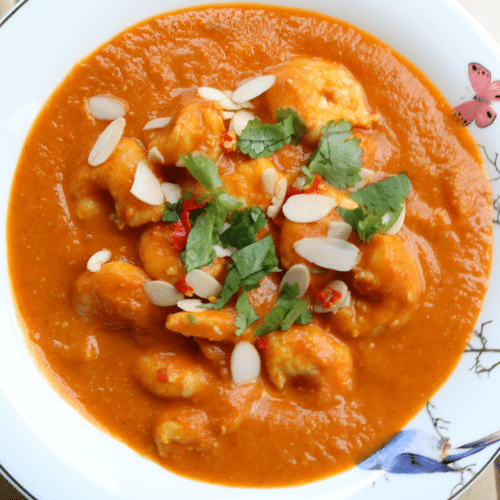
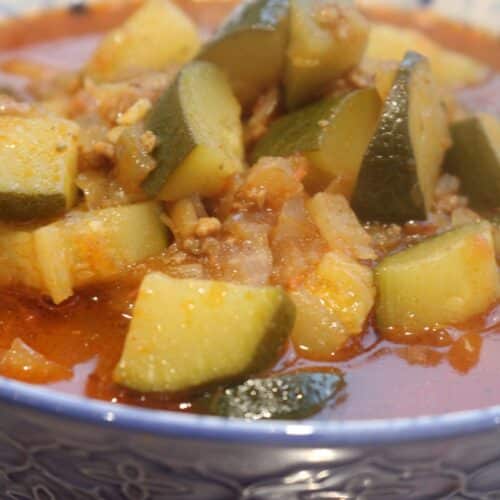
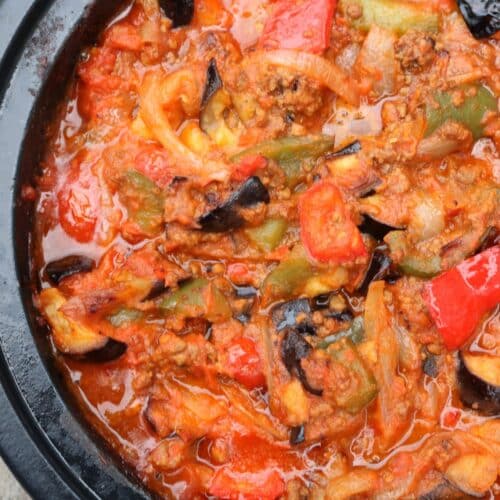
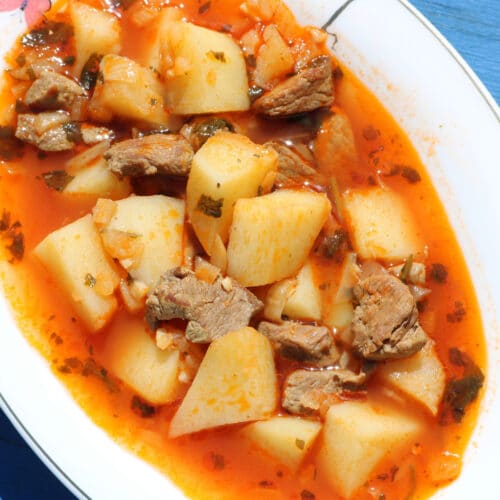
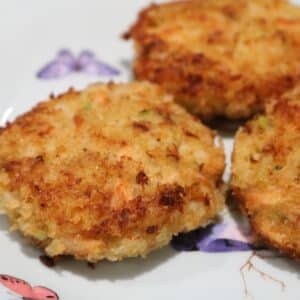

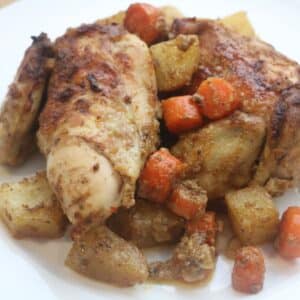

linda
my teta used to make this all the time
richard battikha
I used dry leaves. The final product was rather gritty. Is there a middle step, maybe rinsing, for the dry leaves before adding to the pot?
Thx
Zaatar
You really have to spend time cleaning them, rinsing them over and squeezing them a couple of times! There is no short cut which is why most experienced cooks make this!
Nouna
If I used frozen leaves, would I have to clean them just as many times (at least 3)?
Zaatar
Yes if you don't want them to be too gelatinous!
Anonymous
delicious
Anonymous
I prepared this for a dinner party, and the molokheyya was a great success. Many thanks for this wonderful recipe
Anonymous
I always use this recipe - I love it!
Anonymous
Do I have to defrost fresh frozen mloukieh and then fry it?do I have to squeeze the leaves dry too first ?